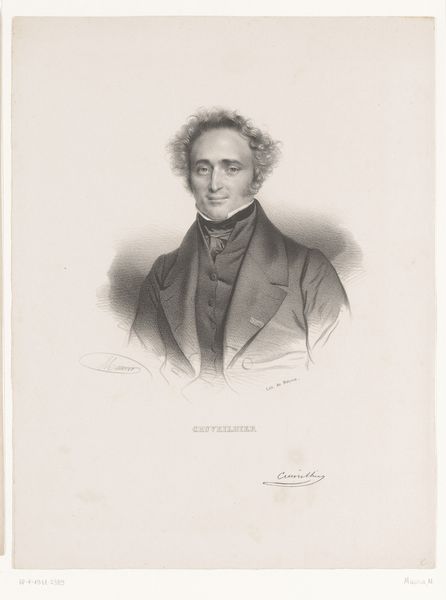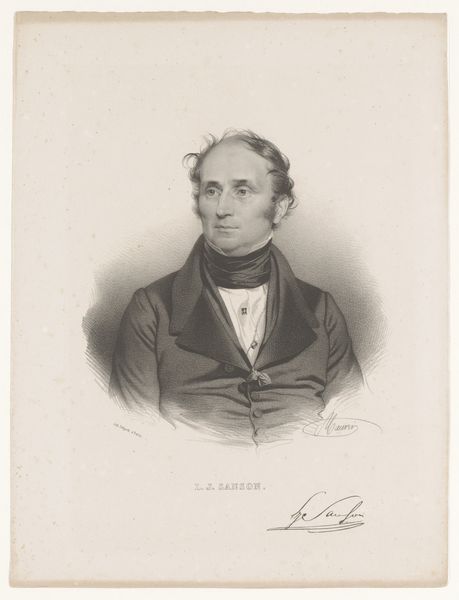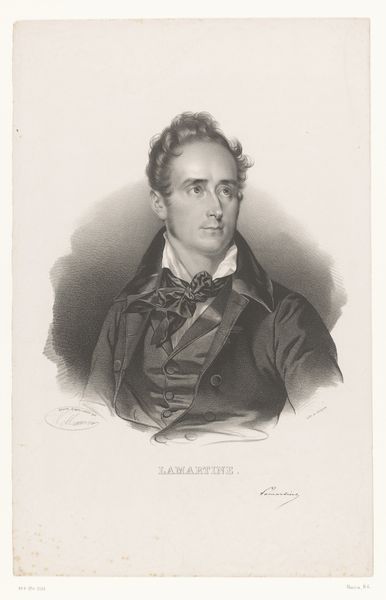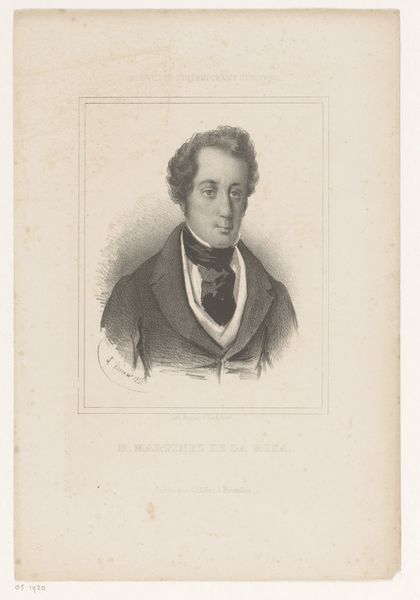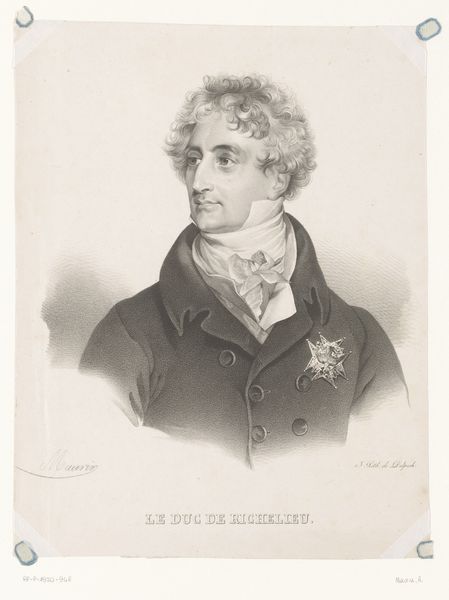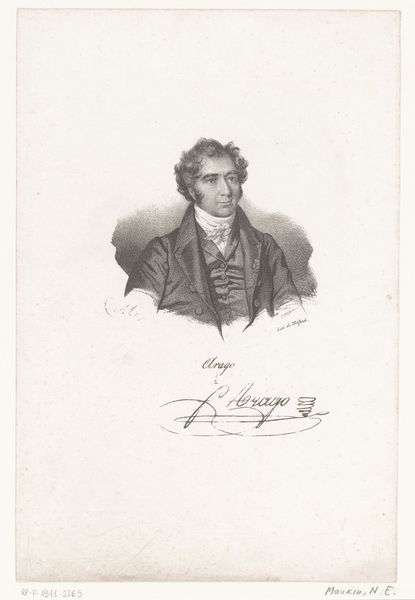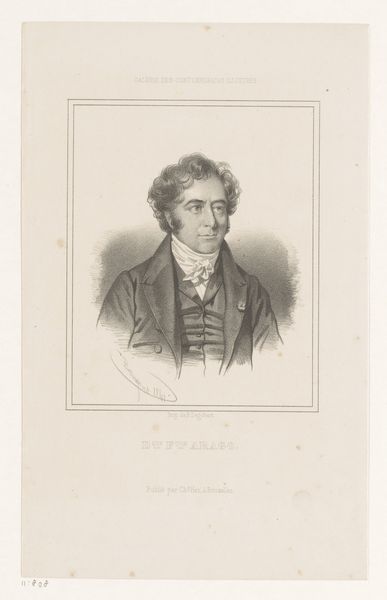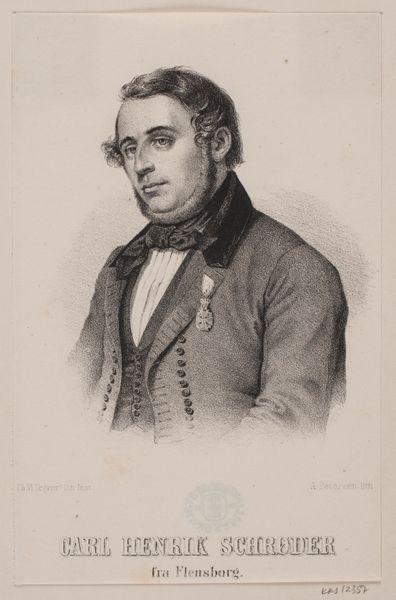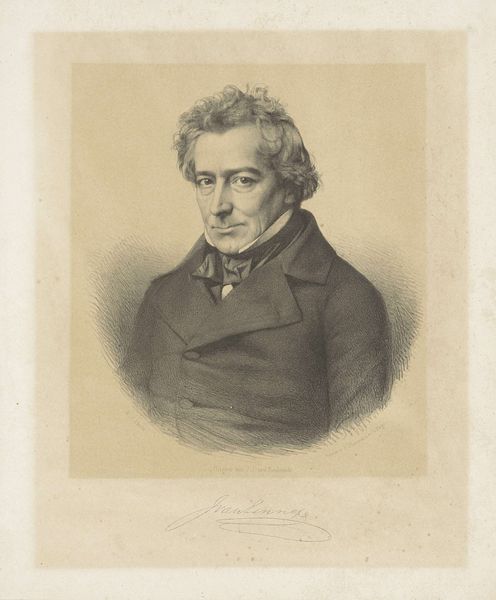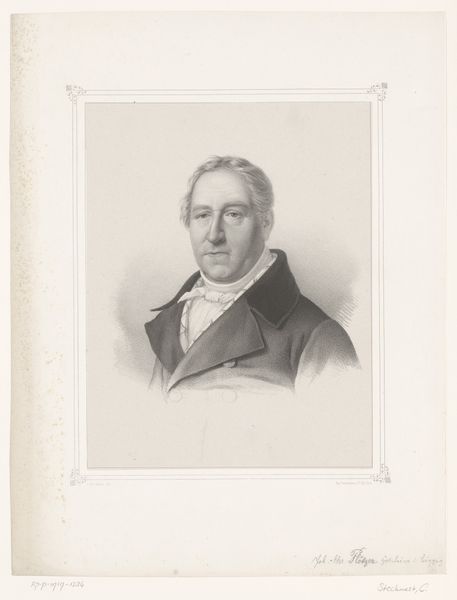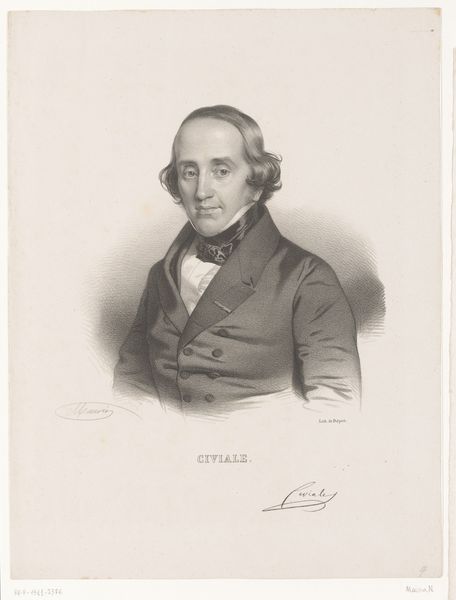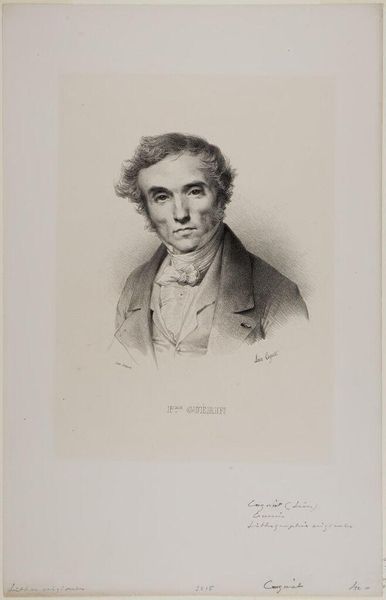
drawing, pencil
#
portrait
#
drawing
#
neoclacissism
#
caricature
#
pencil drawing
#
pencil
#
portrait drawing
#
pencil work
Dimensions: height 434 mm, width 310 mm
Copyright: Rijks Museum: Open Domain
Editor: Here we have Nicolas Maurin's "Portrait of François Arago," made between 1825 and 1842 using pencil. There's a real sense of formality in the sitter’s pose and attire. What do you make of this piece? Curator: The symbols embedded here offer an insight into the culture of that era. What catches my eye is the almost performative display of scientific acumen. The portrait strives not just to capture likeness but to project Arago as a figure of intellectual authority. Notice the subtle emphasis on his piercing gaze. What associations does that evoke? Editor: I guess it feels like he’s meant to appear very intelligent, almost like he can see into things that others can't. Curator: Precisely. And consider the clothing. It's more than just attire; it’s a visual marker of status and societal role, signaling a connection to the burgeoning scientific class. Doesn't it remind you of how individuals historically utilized clothing as a kind of silent language? Editor: Definitely! And how portraiture in general can elevate someone's image. I guess it makes me wonder about who gets remembered and how. Curator: Absolutely, who decides who’s worthy of this symbolic immortality? Consider too the psychological weight attached to being memorialized in this way; the responsibility to maintain a certain image, for the sake of legacy and remembrance. That visual legacy then contributes to our collective understanding of the man. What new perspective has this brought you? Editor: It's made me think about portraits not just as pictures, but as tools for creating a particular kind of memory and identity. Curator: And how we continually negotiate and reinterpret these cultural relics, informing our present understanding.
Comments
No comments
Be the first to comment and join the conversation on the ultimate creative platform.
